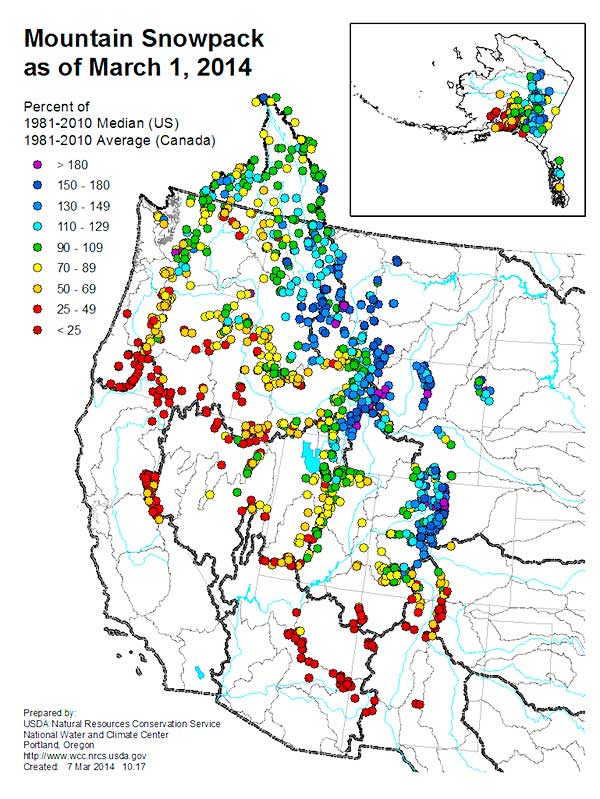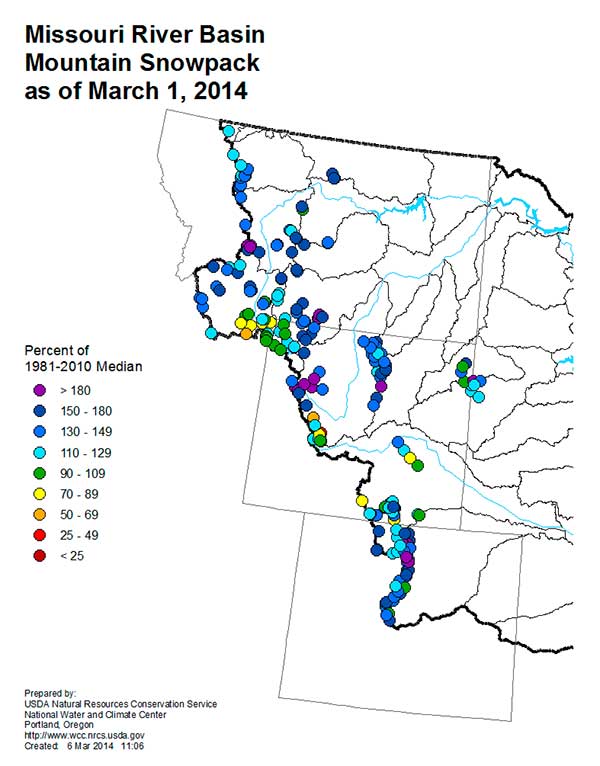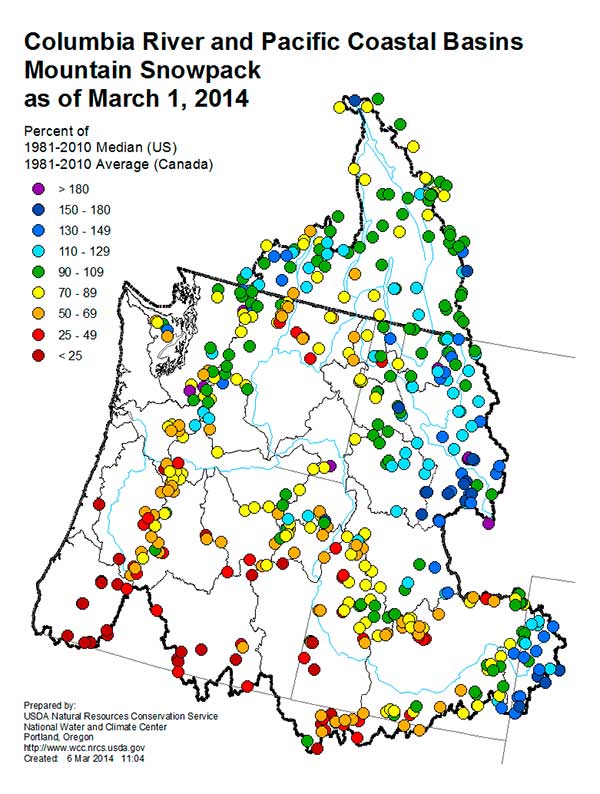
Fly fishers in the Northern Rockies and throughout much of the West follow snowpack data with an almost religious zeal.
There’s always some fishing to be done no matter what the summer and fall flows eventually turn out to be, though dry winters lead to a host of fishing (and other) challenges that aren’t so pretty.
Snowpack followers understand well that snowpack volumes measured at this time of year (mid-March) are but just a piece of the puzzle when it comes to trying to predict flows for the next two quarters of the year. Spring weather has a critical impact on snowpack; a long, cool and wet spring (and cooler to average summer) may have snowpack building into May and trickling out through the summer and into fall. The years that turn from winter right into late spring / early summer by late April or early May can flush the meat of the snowpack right out in a matter of a few flooding weeks.
That said, at least from where we stand today, and looking at the Western US as a whole above, the central and northern Rockies have a snowpack load that hasn’t been seen for a while. The coveted Missouri River drainage below looks particularly good.


As seen above, the Columbia River Basin, despite all the recent rain and snow, is improving but still has some ground to make up.
Finally, the NRCS has some pretty rosy projections regarding northern Rockies stream flows for the upcoming prime seasons below.
Hot damn.


